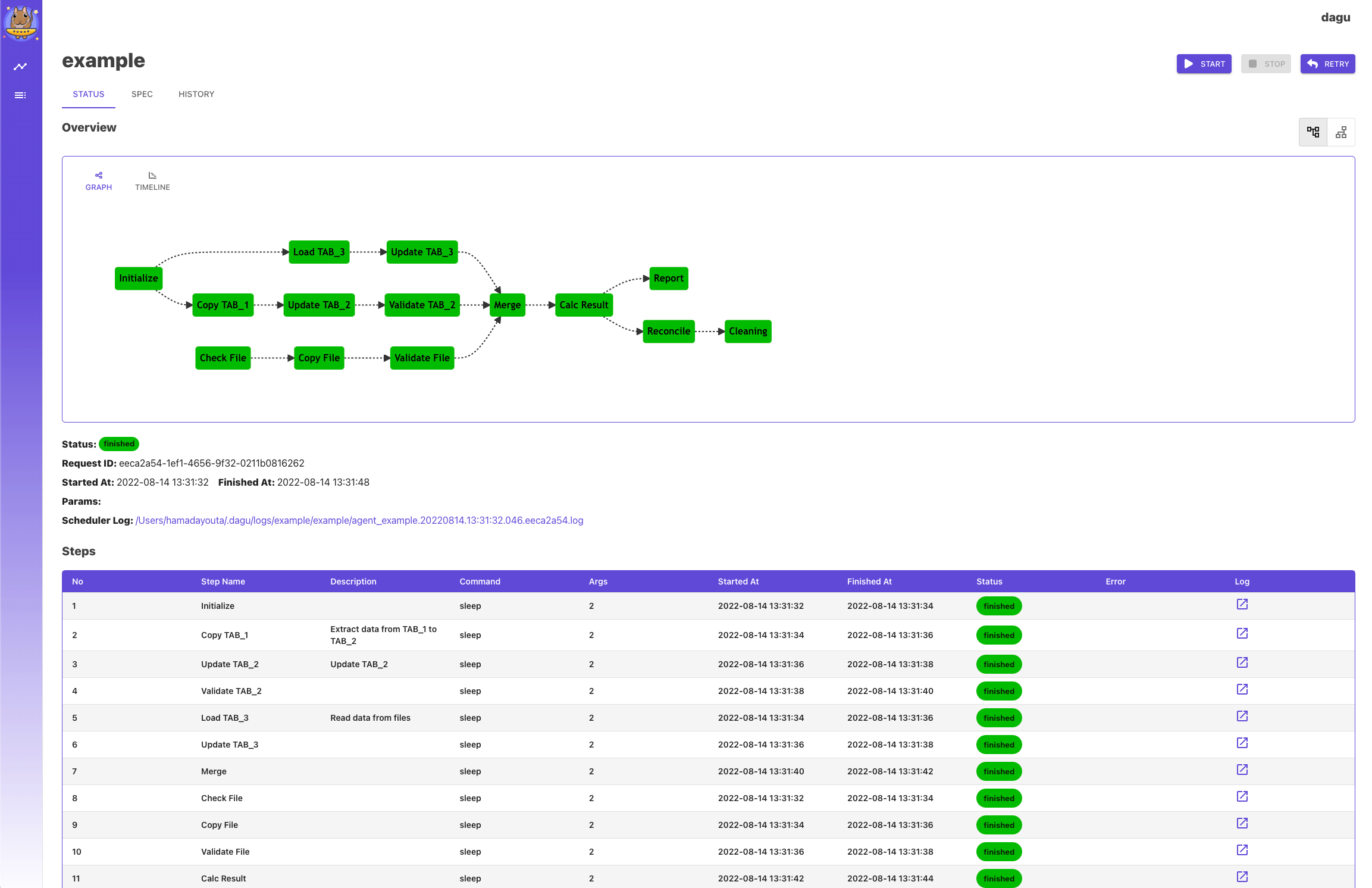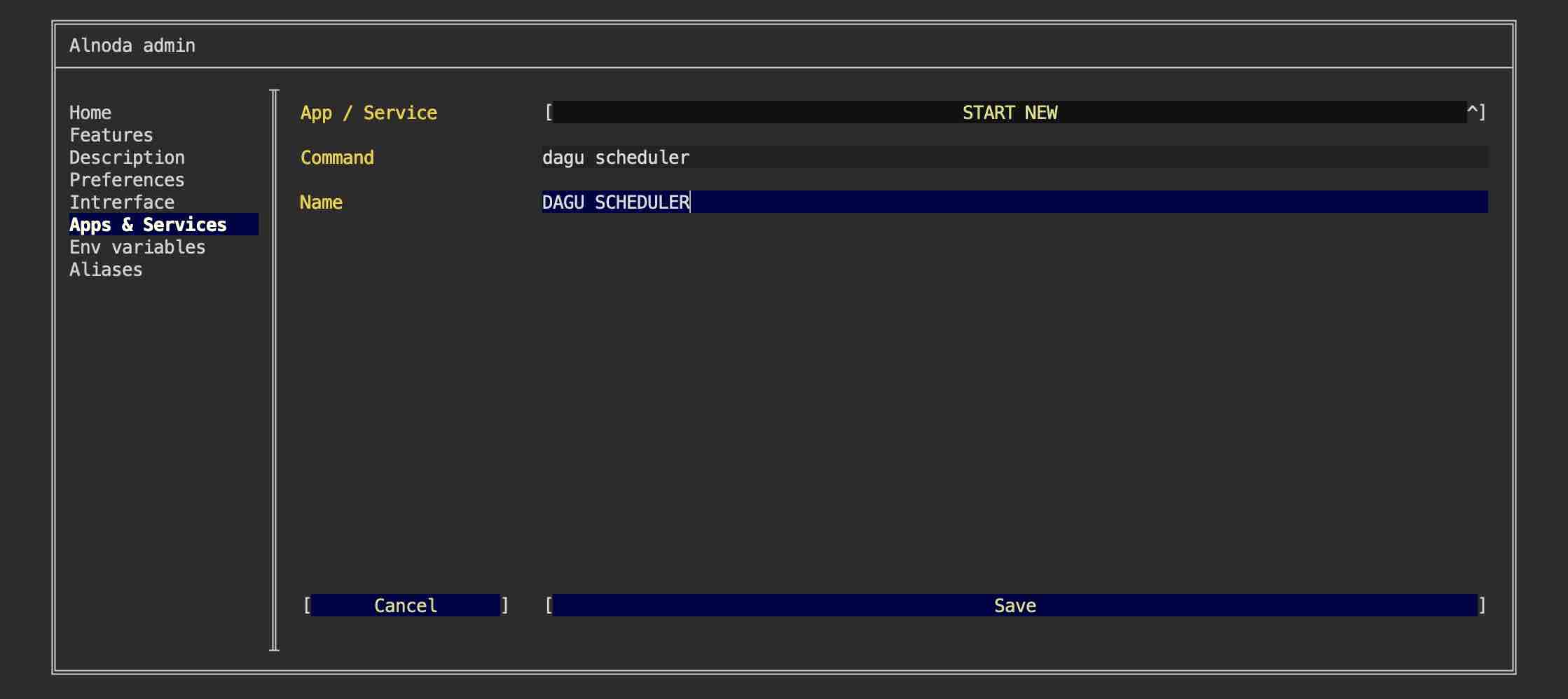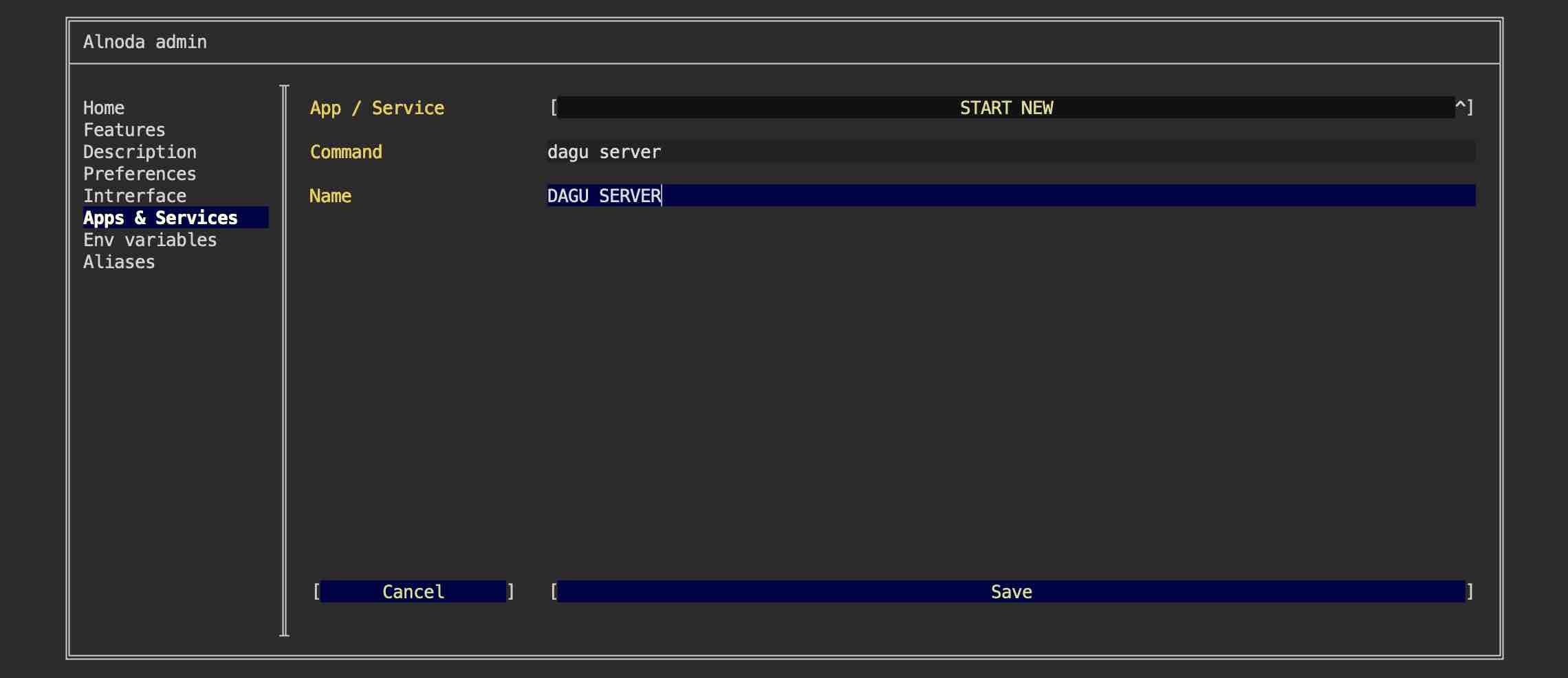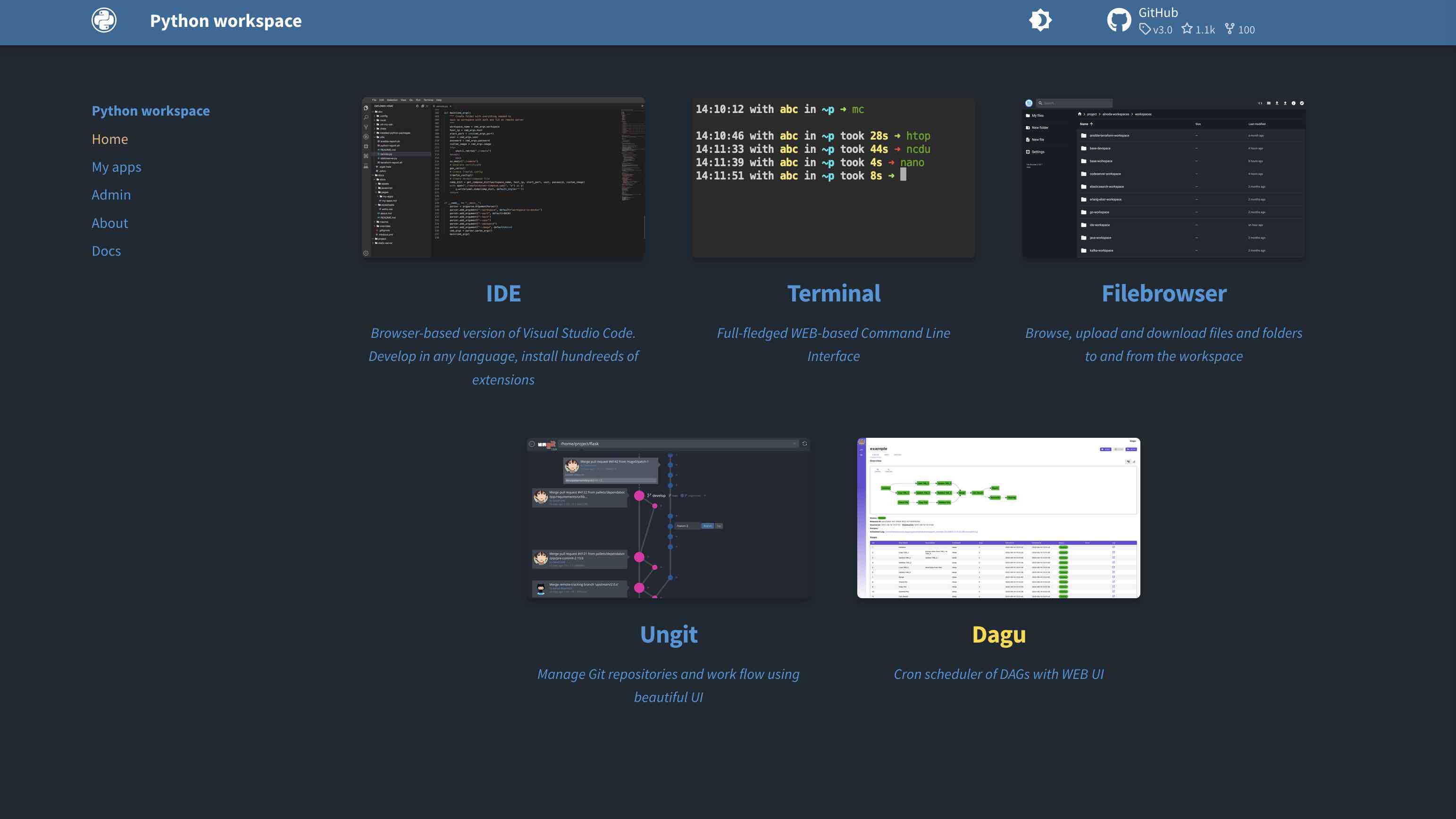Dagu
In this example we will set up Dagu - a cron alternative with a Web UI, but with much more capabilities.
Dagu can schedule executions of DAGs with Cron expressions, and define dependencies between related jobs and represent them as a single DAG (unit of execution).

Info
Dagu can be installed in any workspace. We will use Python workspace v.4.0 in this example.
Note
First, we'll use the dagu downloader script to fetch the dagu binary. We'll then create a config file and some example DAGs. Finally, we'll add dagu to the workspace and create a shortcut on the Home page.
Install
First let's download dagu
$ curl -L https://raw.githubusercontent.com/yohamta/dagu/main/scripts/downloader.sh | bash
% Total % Received % Xferd Average Speed Time Time Time Current
Dload Upload Total Spent Left Speed
100 728 100 728 0 0 2628 0 --:--:-- --:--:-- --:--:-- 2656
Downloading the latest binary to the current directory...
Downloading dagu v1.8.6...
Now we only need to move dagu to the user's bin folder, which is listed in the PATH
$ mv dagu ~/bin
with <font color="#FDEB61">abc</font> in <font color="#37E6E8">~/p</font>
Configure
Create configuration file ~/.dagu/admin.yaml. You can do it simply by executing
$ mkdir ~/.dagu/ && touch ~/.dagu/admin.yaml
with <font color="#FDEB61">abc</font> in <font color="#37E6E8">~/p</font>
Open this configuration file in your IDE or file browser, and paste the following lines
# Web Server Host and Port
host: 0.0.0.0
port: 8033
# path to the DAGs directory
dags: /home/project/dags
# Web UI Color & Title
navbarColor: "#1E415E"
navbarTitle: Dagu
# Basic Auth
isBasicAuth: false
# Base Config
baseConfig: /home/project/dags/config.yaml
# Others
logDir: /home/project/dags/logs/admin
command: /home/abc/bin/dagu
In the config file, we've specified the host as 0.0.0.0, which is essential because the application is running within a Docker
container. We've also designated 8033 as the port, a vacant one within the workspace's range of 8021-8040.
Warning
This example relies on port 8033 being available within your workspace. To verify the availability of this port, please consult the 'About' tab within your workspace's UI.
Furthermore, we've denoted /home/project/dags as our DAGs directory. Let's establish this folder and navigate into it.
$ mkdir /home/project/dags
with <font color="#FDEB61">abc</font> in <font color="#37E6E8">~/p</font>
$ cd /home/project/dags
with <font color="#FDEB61">abc</font> in <font color="#37E6E8">~/p/dags</font>
Let's create couple of dags in this folder. Open workspace IDE and create file echo.yaml with the following content
steps:
- name: step 1
command: echo hello
- name: step 2
command: echo world
depends:
- step 1
And file script.yaml
steps:
- name: step 1
command: "bash"
script: |
cd /tmp
echo "hello world" > hello
cat hello
output: RESULT
- name: step 2
command: echo ${RESULT} # hello world
depends:
- step 1
And one file with schedule. Call this file today.yaml
schedule: "* * * * *"
env:
TODAY: "Saturday"
steps:
- name: hello
command: echo "hello, today is ${TODAY}" >> /home/hello.txt
Add to workspace
To initiate dagu, both the dagu server and scheduler need to be launched. We'll set both up as resilient workspace services. Once configured this way, dagu will start automatically each time the workspace is initiated.
Let's first create service for dagu scheduler
- Open "Admin" tab in the workspace UI and navigate to "Workspace Settings"
- Go to the tab "Apps & Services"
- Select "START NEW" from the picklist
- Enter the command -
dagu scheduler - Save

Now we need to create service for dagu server. Repeat the steps we have made with dagu scheduler. Give it any name,
as command enter dagu server

Restart the workspace for services to get started. You can restart workspace with the command wrk kill
Add UI tab
Now, let's proceed to include a shortcut tab for dagu on the workspace's "Home" page.
This shortcut tab includes a title, description, and image. Utilize the filebrowser or IDE to upload any image of your preference into the workspace. The choice of the image is entirely yours. You may want to consider a screenshot of the app itself as one potential option.
After you upload the image to the workspace
- Go to the "Interface" tab of the workspace settings and select "CREATE NEW" from the picklist.
- Give it any title and description.
- In the field "Port" enter port 8033 - the port we set in the dagu configuration file.
- In the file picker find your image.
- Leave field "path" blank and click "Create"

We have added Dagu shortcut to the Home page

Use
We can access dagu through the newly created shortcut. From here, we can view and manage the DAGs in the /home/project/dags directory, even running or creating new ones via the dagu UI. Additionally, we can observe that the 'today' DAG automatically runs every minute and review its execution history and logs.
